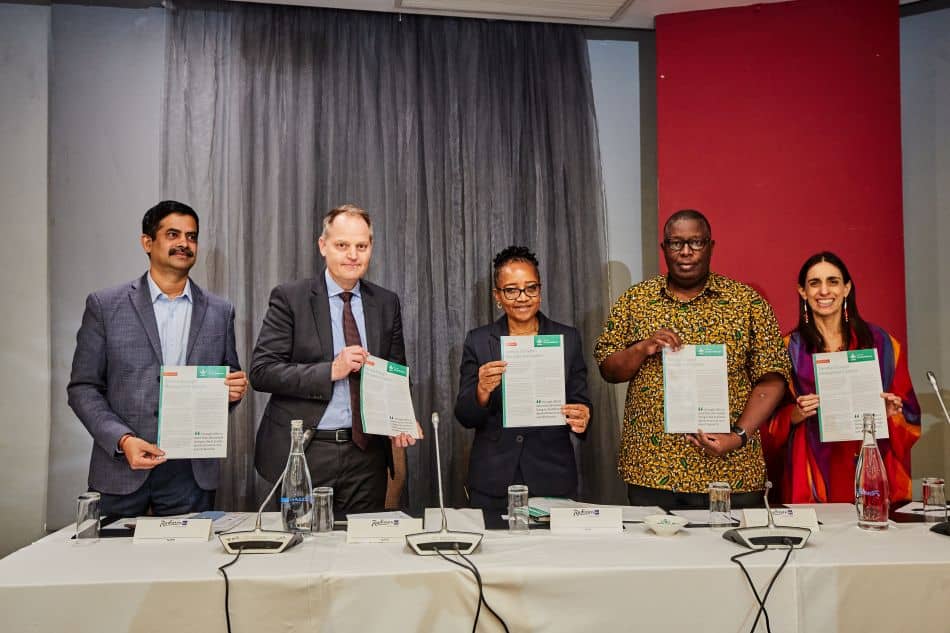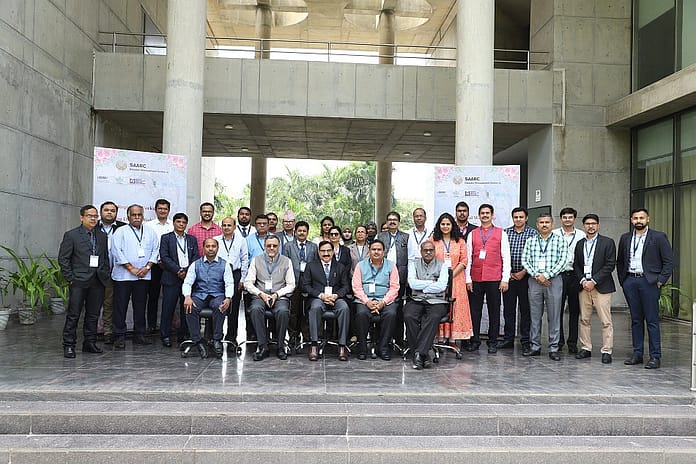LUSAKA, ZAMBIA – Zambia will be better equipped to cope with droughts thanks to a new satellite-based online weather-monitoring system. The Zambia Drought Monitoring System (ZADMS), developed by the International Water Management Institute (IWMI) for Zambia’s Ministry of Agriculture will provide all the information needed to effectively manage drought. For example, it will enable the Ministry and partner organizations to see when a drought is emerging; identify the severity of an evolving drought; and take appropriate action early on to support citizens to avoid the worst impacts of prolonged dry spells.

“Life in Zambia is becoming increasingly precarious, because climate change is unleashing more floods, droughts, and unpredictable rainfall,” said Mark Smith, IWMI’s Director General. “While ZADMS can’t change the weather it can help the Zambian government to make informed decisions and help them deliver the information that farmers need to cope. For example, with a drought looming, ministers might decide to import extra food or prepare plans for providing supplementary irrigation to farmers, helping to make the nation more resilient to climate shocks.”
IWMI is implementing the new system as part of the CGIAR Initiative on Climate Resilience (known as ClimBeR) and the program Accelerating the Impact of CGIAR Climate Research for Africa (AICCRA). Involving collaboration between multiple organizations, these efforts are applying new technologies and approaches to address the social, environmental and economic consequences of climate change.
Drought is one of the most threatening natural hazards due to its creeping and invasive nature, which exacerbates existing systemic vulnerabilities, creates new risks and consequentially manifests as multi-dimensional hindrances to sustainable development. In Zambia, drought is a recurrent problem. Events in 1991–1992, 2015–2016, 2019–2020 and 2021–22 were particularly damaging, affecting millions of people due to crop failures, food and water shortages, livestock deaths and reduced GDP.
ZADMS incorporates national- to district-level datasets drawn from multiple satellites and other sources. It provides seasonal, sub-seasonal and seven-day weather forecasts; monitoring tools to indicate when drought is present and, if so, the level of severity; and district-level agricultural contingency plans that can be put into action if the system indicates that specified triggers have been reached. Data are primarily presented as easy-to-interpret on-screen maps but can be output as user-friendly drought bulletins if required.

“Zambia’s new system uses the same technology as our tried-and-tested South Asia Drought Monitoring System (SADMS), which we began developing in 2014,” explains Giriraj Amarnath, ClimBeR Country Lead Zambia and Research Group Leader for Water, Risks to Development and Resilience at IWMI. “SADMS is now regularly used by the Indian Council of Agricultural Research, Sri Lanka’s Disaster Management Centre, UN World Food Programme, partners of the World Bank and others to mitigate drought risk.”
In the past, difficulties in locating, accessing and having the computing power to analyze weather and agricultural data made drought monitoring a slow and costly process. The ZADMS overcomes this challenge by presenting all the data required for monitoring and managing drought through a single portal, which is freely accessible to anyone with a desktop computer and internet access.
“ZADMS’ usability facilitates collaborative working at all levels between institutions and across sectors, which is vital when seeking to mitigate the multiple and complex impacts of climate change,” says Ana María Loboguerrero, the ClimBeR Lead and scientist at the Alliance of Bioversity International and CIAT.
In Zambia, the Ministry of Agriculture could use the system in a variety of ways. For example, on identifying that short dry spells have occurred in recent years at the start of the rainy season, it might keep an eye on near-time weather forecasts and advise farmers to delay planting crops if the trend appears to be continuing. Or, in the case of a moderate drought being forecast, it might subsidize simple climate-smart technologies for farmers. Plus, it could provide information to finance and insurance suppliers, so they might develop new climate-adaptation finance products.
“Until now we have not had a well-established framework for managing drought as a Ministry,” said Zambia’s Agriculture Acting Permanent Secretary Mrs Peggy Mlewa “We are therefore delighted that ZADMS is providing us with an end-to-end drought management system. It will enable us to work together with other ministries, research centres, extension workers, farmers and private-sector colleagues, and take timely action to prepare for droughts before the crisis point is reached.”
IWMI jointly with the Ministry of Agriculture, ClimBeR, AICCRA and related organizations officially launched the ZADMS at a workshop on 20th February at Hotel Radisson, Lusaka. Participants working in meteorology, water resources, agriculture and disaster management explored the ZADMS’ capabilities in drought monitoring and early warning; assessed ways to institutionalize the ZADMS at national and sub-national levels on existing knowledge products, and promote multi-institutional collaboration to mitigate drought risks; and discussed the development of contingency plans as part of Zambia’s future drought management strategy.
Contact:
Phindiwe Nkosi, Communications and Knowledge Management Expert,
International Water Management Institute, Pretoria, South Africa P.Nkosi@cgiar.org









